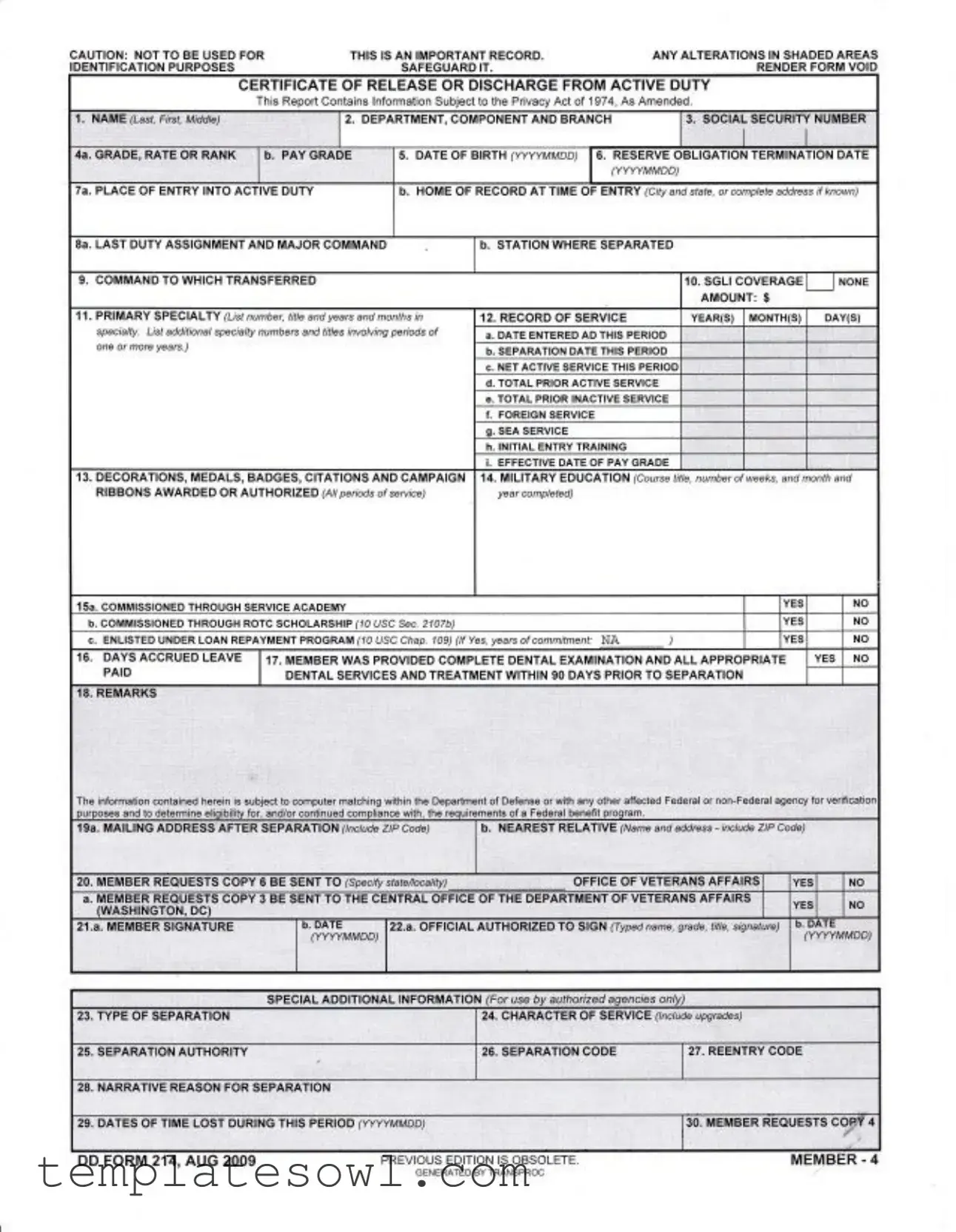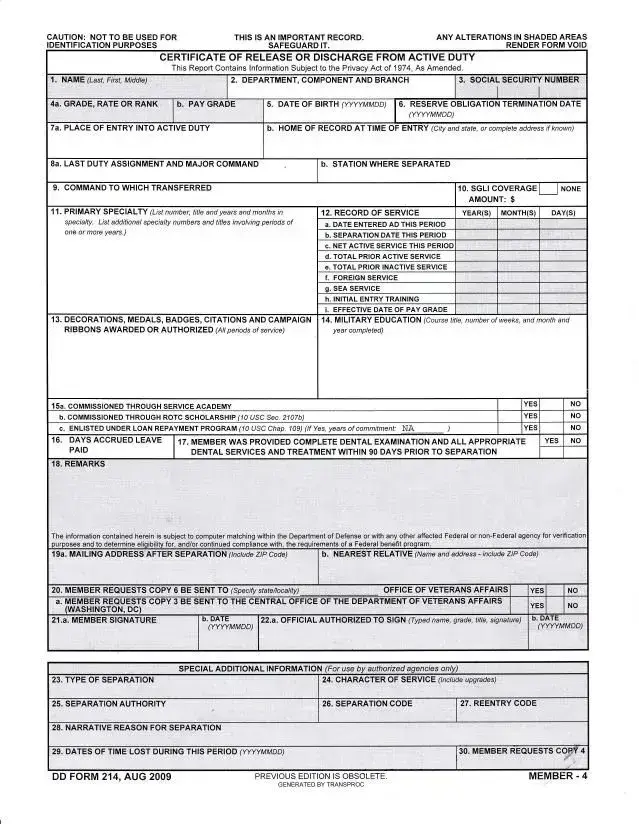What is a DD Form 214?
The DD Form 214, officially known as the Certificate of Release or Discharge from Active Duty, is an essential document issued to military personnel upon their separation from active duty. This form provides crucial information about a service member's time in the military, including their rank, service dates, and any awards received. It serves as proof of military service and may be needed for various purposes such as veteran benefits and employment applications.
Why is the DD Form 214 important?
The DD Form 214 is vital for veterans. It serves as verification of military service, which is necessary for accessing benefits from the Department of Veterans Affairs (VA), such as healthcare, education, and housing assistance. The document may also be required when applying for jobs or government positions, ensuring that military experience is recognized and understood by potential employers.
How can I obtain my DD Form 214?
You can request your DD Form 214 through several methods. If you are a veteran, you may contact the National Archives and Records Administration (NARA) online, by mail, or by fax. Ensure that you have all necessary information on hand, such as your branch of military service, dates of service, and service number. If you need assistance, veterans' organizations may also provide help with the process.
What information is included on the DD Form 214?
The DD Form 214 contains various details, including the member's name, rank, service dates, type of separation, character of service, pay grade, and any decorations or awards received. It also highlights the member's military education, foreign service, and any accrued leave. This comprehensive description of the service member’s career is crucial for ensuring accurate recognition of their service.
What does the character of service mean on the DD Form 214?
The character of service on the DD Form 214 reflects the nature of the service member's time in the military. It can be categorized as Honorable, General (Under Honorable Conditions), Other Than Honorable, Bad Conduct, or Dishonorable. This classification is critical for determining eligibility for various benefits and can impact future employment opportunities.
Can I modify my DD Form 214?
Modifications to the DD Form 214 are not allowed for any shaded areas; any alterations in these areas can render the form void. If there are errors in the document, veterans should seek corrections through the appropriate regulatory channels, such as the Board for Correction of Military Records. Keeping the form accurate and unaltered is essential for its validity.
How long does it take to receive a DD Form 214 replacement?
The time required to receive a replacement for a DD Form 214 can vary. Typically, processing can take anywhere from a few days to several weeks, depending on the volume of requests and the completeness of your application. It is advisable to submit your request well in advance of any deadlines, especially if needed for benefits or employment.
Is the DD Form 214 confidential?
While the DD Form 214 is an official record of military service, it does include sensitive information subject to the Privacy Act of 1974. Therefore, it is crucial to keep it secure and share it only with trusted entities, such as employers or organizations assisting with benefits. Safeguarding this document is essential to protect personal information.
Where should I store my DD Form 214?
It is important to store your DD Form 214 in a safe and secure location, such as a locked drawer or a safe. Consider also keeping a digital copy in a secure cloud storage system for easy access. Ensure that trusted family members know its location, in case you need assistance accessing it in the future.

